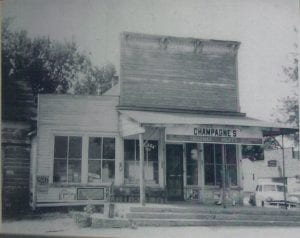History of Lexington Michigan (1830s–1950s) – Video
The history of Lexington Michigan spans lumber, fishing, and summer resorts. This Lake Huron village adapted to change, creating a legacy still seen in its harbor and streets.
News & Fun in Michigan
 We examine stories and events that shaped the history of the Upper Thumb and Michigan. While we focus on the Thumb region, other Great Lakes historical events are covered. Major events include the lumbering era and the 1871 and 1881 great fires. We cover major pioneers and personalities that shaped the region. To hear many of our best stories, visit and subscribe to our Podcast, “The End of the Road in Michigan.”
We examine stories and events that shaped the history of the Upper Thumb and Michigan. While we focus on the Thumb region, other Great Lakes historical events are covered. Major events include the lumbering era and the 1871 and 1881 great fires. We cover major pioneers and personalities that shaped the region. To hear many of our best stories, visit and subscribe to our Podcast, “The End of the Road in Michigan.”
Our best Michigan history posts are found below.
The history of Lexington Michigan spans lumber, fishing, and summer resorts. This Lake Huron village adapted to change, creating a legacy still seen in its harbor and streets.
Photograph shows farmers bringing bean harvest by horse?drawn wagon to the Bad Axe Grain Company around the 1910s. Reflects the rise of grain elevator infrastructure that supported Michigan’s rural economy.
Built in 1895, the Hotel Heasty was a brick-front landmark in Pigeon, Michigan, offering travelers lodging, home-cooked meals, and a link to the community’s railroad-era growth.
In the 1930s, Spikehorn Meyers built a bear camp in Harrison, Michigan, that became one of the state’s most famous — and wildest — tourist stops. Visitors fed bears popcorn, watched them drink soda from bottles, and even lined up for …
An early-1900s photo captures the Bad Axe chicory plant tied to the railroad and regional farms. Operated by E. B. Muller & Co., it supported Michigan’s coffee-substitute trade in the first half of the 20th century.
This circa-1916 photograph captures The Ramsey Co. storefront in Port Hope, Michigan. A horse-drawn buggy stands ready outside the clapboard commercial building, offering a glimpse into early Main Street life in the Thumb region during a quieter era.
This historic photograph captures the sprawling Huron Milling Company complex in Harbor Beach, Michigan, a major employer and economic driver in the early to mid-20th century. With its multi-story brick structure, water tower, and rail connections, the mill played a central role in processing grain and feeding regional markets.
Michigan’s beautiful landscape of rolling hills, sparkling lakes, and thick forests inspired early 20th-century entrepreneurs to build scenic lookout towers to entice the new generation of automobile tourists. In the 1910s and 1920s, as motoring became popular, roadside observation towers sprang …